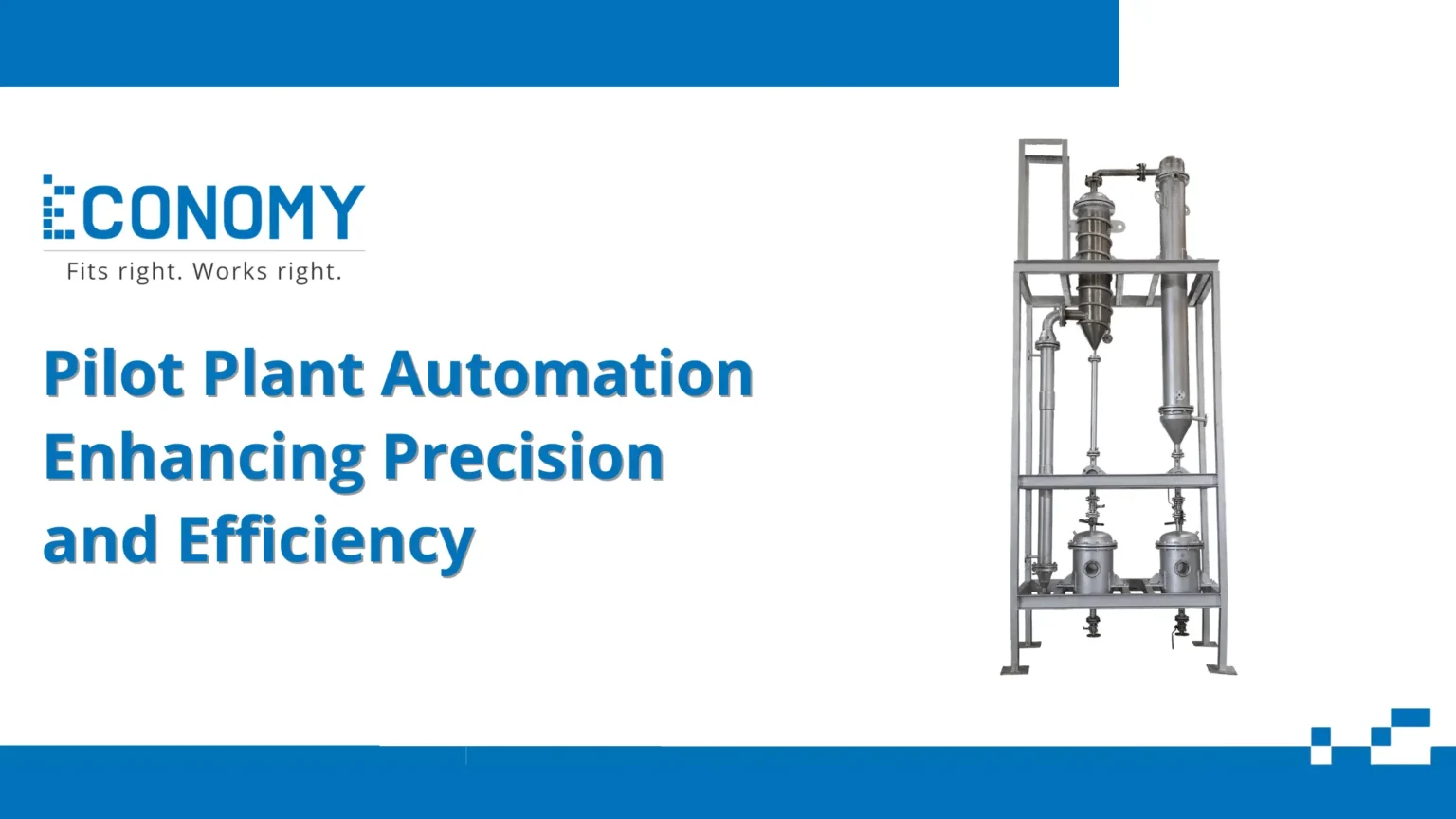
Pilot plant automation plays a pivotal role in modern industrial and research environments, bridging the gap between lab-scale experiments and full-scale production. By implementing automation in pilot plants, industries can improve precision, streamline processes, and boost operational efficiency. Automated systems enable real-time monitoring, precise control of variables, and quick adjustments, all of which contribute to enhanced productivity and minimized human error. This article explores the significance of pilot plant automation, with a specific focus on the key components that make it successful.
The Importance of Pilot Plant Automation
In industries such as pharmaceuticals, chemicals, food processing, and energy, pilot plants are essential for testing the feasibility of scaling up processes before full production. Automation adds another layer of control and reliability, which is especially valuable in high-stakes environments where quality and safety are paramount.
Automated pilot plants allow for better data collection, enhanced repeatability of experiments, and fine-tuning of production parameters. This leads to faster scaling-up processes, fewer risks, and a reduction in resource wastage. Automated systems also ensure that variables like temperature, pressure, and flow rates are tightly controlled, optimizing the production process for better yields and consistency.
Key Components in Pilot Plant Automation
Several critical components are responsible for the smooth operation and effectiveness of automated pilot plants. These components work in concert to ensure precise control, monitoring, and adjustments in the process.
1. Programmable Logic Controllers (PLCs)
PLCs are the heart of any automated system, including pilot plants. These digital controllers can automate various processes by receiving input signals from sensors, processing data, and sending commands to actuators or valves. PLCs are known for their reliability and ability to handle complex operations, such as adjusting process conditions in real-time.
In pilot plants, PLCs ensure that operational parameters like temperature, pressure, and flow rates are continuously monitored and controlled within pre-set limits. Their ability to handle data from multiple sources in real-time enables high-precision operations and fast response times in case adjustments are required.
2. Human-Machine Interface (HMI)
The HMI serves as the bridge between human operators and the automated system. It provides a user-friendly interface where operators can monitor the system’s status, control settings, and receive alerts in case of anomalies. The HMI is critical in allowing quick and efficient decision-making based on real-time data.
In pilot plant automation, an HMI allows operators to visualize data trends, control process variables, and adjust parameters if necessary. This helps reduce the time required for decision-making and enhances operator efficiency, as critical information is readily accessible.
3. Supervisory Control and Data Acquisition (SCADA)
SCADA systems provide a higher-level control mechanism by offering centralized monitoring and control of the entire pilot plant. Through SCADA, operators can monitor large-scale processes from a single location, analyze data trends, and adjust parameters remotely.
SCADA’s ability to integrate with PLCs and other control systems allows for seamless data sharing and process optimization. The system also provides historical data storage, allowing operators to study past operations and improve future performance.
4. Sensors and Actuators
Sensors and actuators are the essential components that monitor and control physical conditions in the pilot plant. Sensors measure process parameters like temperature, pressure, flow rate, and chemical composition, providing real-time data to the control system. Actuators, on the other hand, physically adjust valves, pumps, and other mechanical devices based on commands from the PLC or SCADA system.
In an automated pilot plant, accurate sensors are critical for maintaining process integrity and ensuring that conditions stay within the desired operational range. High-quality actuators ensure precise control over the mechanical components, enabling smooth transitions and adjustments in the process.
5. Data Logging and Analytics Tools
Automation systems in pilot plants must capture vast amounts of data for future analysis. Data logging tools continuously record critical operational parameters, while analytics tools process this data to identify trends, optimize performance, and predict potential issues before they occur.
By incorporating machine learning and predictive analytics, these tools enable more advanced control mechanisms, such as predictive maintenance and process optimization, which enhance efficiency and reduce downtime.
Advantages of Pilot Plant Automation
Implementing automation in pilot plants offers several benefits, including increased precision, better control of process variables, and improved product consistency. Automation also reduces human error, leading to more reliable and repeatable results. Additionally, automated systems can run continuously with minimal oversight, resulting in time and cost savings.
Another major advantage is scalability. Since pilot plants are used to test processes before scaling up to full production, automation allows industries to simulate production conditions on a smaller scale, ensuring a smoother transition to large-scale operations.
Conclusion: Enhancing Precision and Efficiency through Automation
Pilot plant automation is a vital component in modernizing industrial processes and ensuring precision at every stage of development. By integrating key components such as PLCs, HMIs, SCADA systems, sensors, actuators, and data analytics, pilot plants can achieve higher efficiency, better product quality, and reduced operational risks. With automation, industries can not only optimize their pilot plant operations but also ensure a successful scale-up, leading to greater innovation and competitiveness in the market.






